Morning Eye Candy: Burst
Posted in Photography on December 3 2015, by Matt Newman
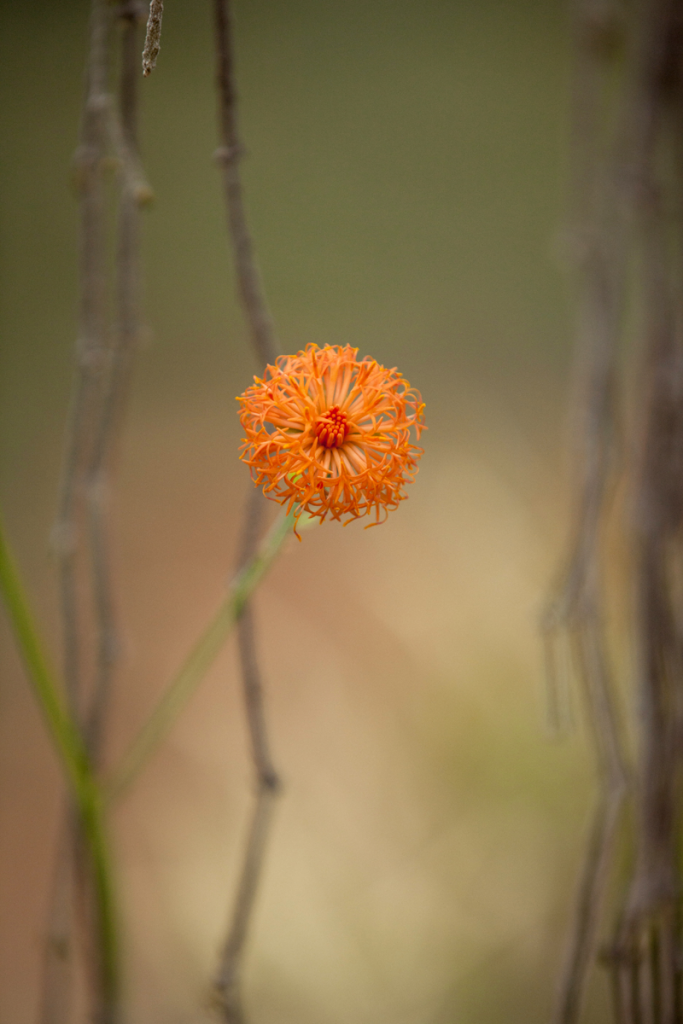
Senecio ballyi in the Nolen Greenhouses for Living Collections – Photo by Ivo M. Vermeulen

Inside The New York Botanical Garden
Posted in Photography on December 3 2015, by Matt Newman

Senecio ballyi in the Nolen Greenhouses for Living Collections – Photo by Ivo M. Vermeulen
Posted in Horticulture on October 20 2014, by Christian Primeau
Christian Primeau is the NYBG‘s Manager of the Enid A. Haupt Conservatory.
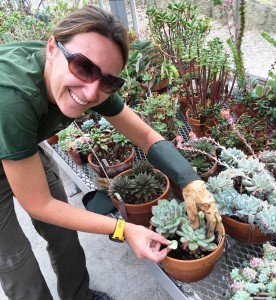
Who doesn’t love a sharer? Not an over-sharer, like Harold in Accounting, whose detailed inquest into his latest digestive afflictions has positively ruined my lunch hour three days running (I’m a horticulturist, not a doctor, Harold…we’ve been over this). No, I’m referring to the sweet woman who makes popcorn and secretly gifts you a handful, or the savior who brings coffee for everyone on Monday morning. And while you won’t even get within visual range of any popcorn or coffee in my possession, I am a prolific sharer of plants, so I do have a few friends left about the office.
Propagating plants can be as painless and satisfying as popping corn, pressing “brew” on the coffee machine, or simply eating lunch outside under a shady tree to avoid Harold. This is especially true of rosette succulents like Echeveria. Often referred to as Mexican Hens and Chicks, these Central and South American species adore sun, tolerate neglect, and exhibit a vast array of captivating leaf forms as well as flower and foliage colors. Truth be told, it’s a painfully easy group of plants to become enamored with and collect. The good news is that propagating and sharing your echeverias is a great way to make someone’s day and assuage the guilt of having spent far too much money on internet plant auctions. Be sure to remind your very patient and understanding spouse that smiles are priceless. PRICELESS.
Posted in Horticulture on September 9 2014, by Christian Primeau
Christian Primeau is the NYBG‘s Manager of the Enid A. Haupt Conservatory.
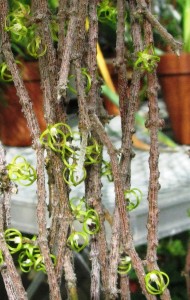
The following is an excerpt from a conversation I had with my lovely wife regarding one of my favorite plants:
“Is it…dead?”
“No, it’s not dead.”
“Are you sure?”
“Well, it’s what I do for a living, so yes, I’m sure.”
“I think its dead.”
“I assure you it is alive.”
“I’m just saying it doesn’t look that way.”
As thrilled as I’d be to title this blog post “The Time I Was Right,” let me set aside petty triumphs (I’ll celebrate later) and address this mystery plant that looks dead, but isn’t. You don’t often stumble across Cynanchum marnierianum for sale and very rarely will you see it on display. The reason is fairly evident—most people wouldn’t consider a plant that looks like a bundle of dead twigs all that stimulating.
Call me a contrarian, but when I hear someone exclaim how ugly a plant is, it makes me love it that much more. Let us save the pretty plants for those with no imagination! I think maybe Proust said that. I appreciate conventionally beautiful plants as much as the next person but, like Grumpy Cat or Adrien Brody, some things appear so bizarre one can’t help but love them.
Posted in Around the Garden, Photography on January 12 2013, by Matt Newman
To prove that even succulents can boast the brightest colors, Echeveria is always willing to step up to bat. You might even catch a few flaunting their stuff in the arid landscape houses of the Enid A. Haupt Conservatory.
Echeveria leucotricha — Photo by Ivo M. Vermeulen
Posted in Around the Garden, Photography on August 13 2012, by Matt Newman
Not, as some might first assume, a neatly-arranged diorama of pine cones.
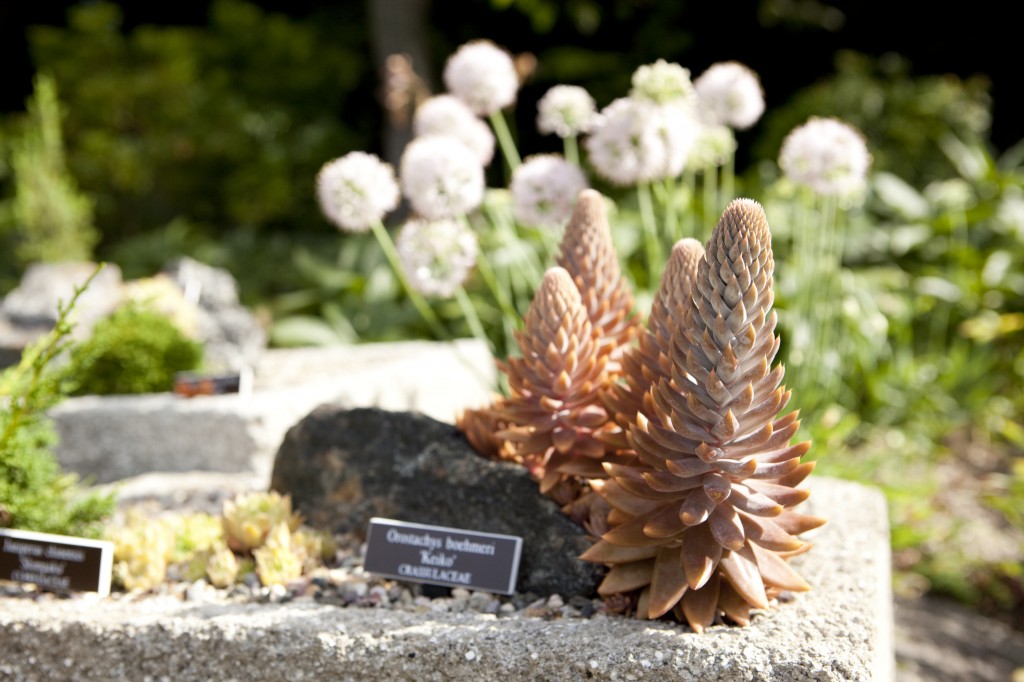
Orostachys boehmeri ‘Keiko’ — Photo by Ivo M. Vermeulen
Posted in Photography on May 11 2012, by Ann Rafalko
The concept of a rock garden sounds amazingly dull, like it would be a garden full of well … rocks. But that couldn’t be further from the truth. Plants are imminently adaptable, and those that adapt to the arid, hardscrabble life of grappling for nutrients in a barren biome tend to be, well, really cool. Need proof? Just check out the fractal fabulousness of these Hens and Chicks in the Garden’s WPA-era Rock Garden.
Photo by Ivo M. Vermeulen
Posted in Around the Garden, Gardening Tips on February 3 2012, by Matt Newman
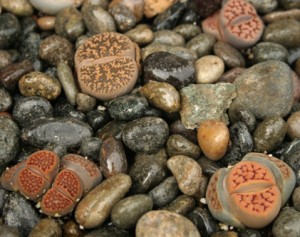 They’re inconspicuous almost to the point of invisibility, assuming you’re looking for them in their natural habitat. You might pass an entire stand of these plants without being the wiser were you to find yourself wandering parts of southern Africa. But when a grazing animal happens by, camouflage is the best natural defense in a landscape where food comes scarce and water borders on mythological.
They’re inconspicuous almost to the point of invisibility, assuming you’re looking for them in their natural habitat. You might pass an entire stand of these plants without being the wiser were you to find yourself wandering parts of southern Africa. But when a grazing animal happens by, camouflage is the best natural defense in a landscape where food comes scarce and water borders on mythological.
Picking out lithops from the patches of pebbly ground where they grow is a simple task if you’re attentive–just look for misplaced symmetry. The thick leaves of the small, bifurcated plants resemble patterned stones, as evidenced in the breakdown of the name itself: lithos means “stone” and -ops means “face” in ancient Greek. But they’re not the subjects of any geology professor. You might guess that from their sometimes vibrant patterns and strange colorations.
Posted in Around the Garden, Photography on January 27 2012, by Matt Newman
If you follow the NYBG Tumblr feed with any regularity, you know my succulent fanaticism shows through like the sun. I (sort of) promise not to let it overtake Plant Talk.
Crassula perfoliata — Photo by Ivo M. Vermeulen
Posted in Around the Garden, Photography on December 14 2011, by Matt Newman
Frosty mornings are making a fashionably late entrance! I wonder if this little succulent anticipates the return of warmer weather as much as most New Yorkers…
Photo by Ivo M. Vermeulen